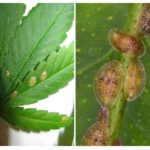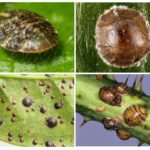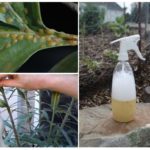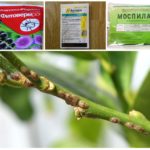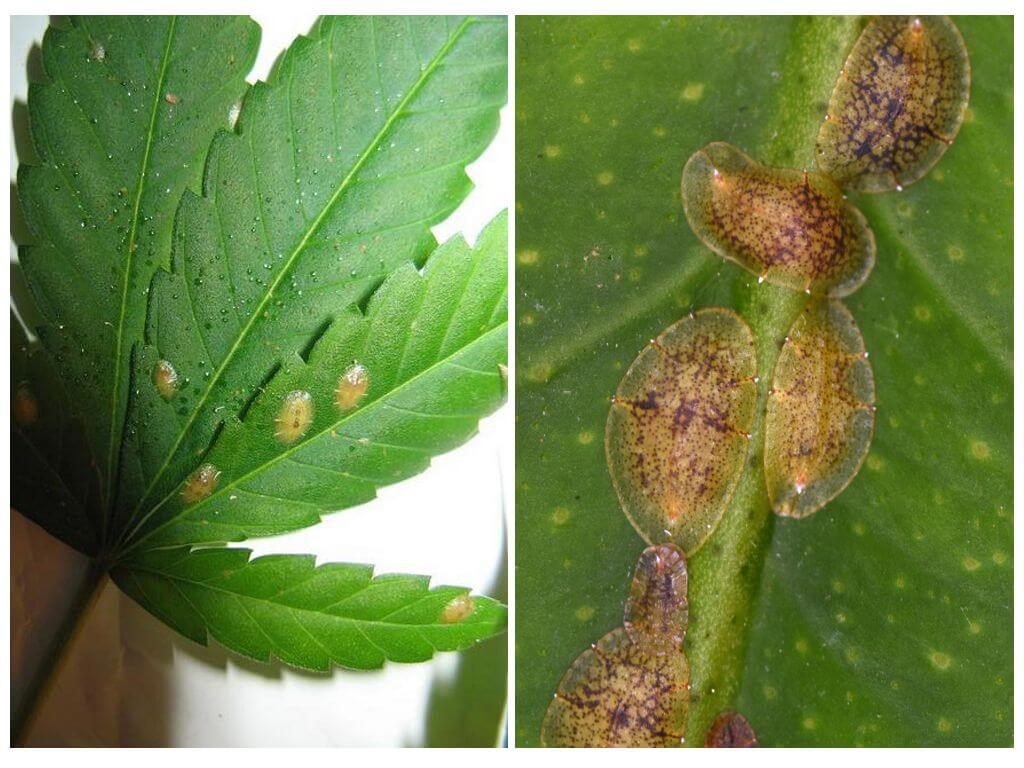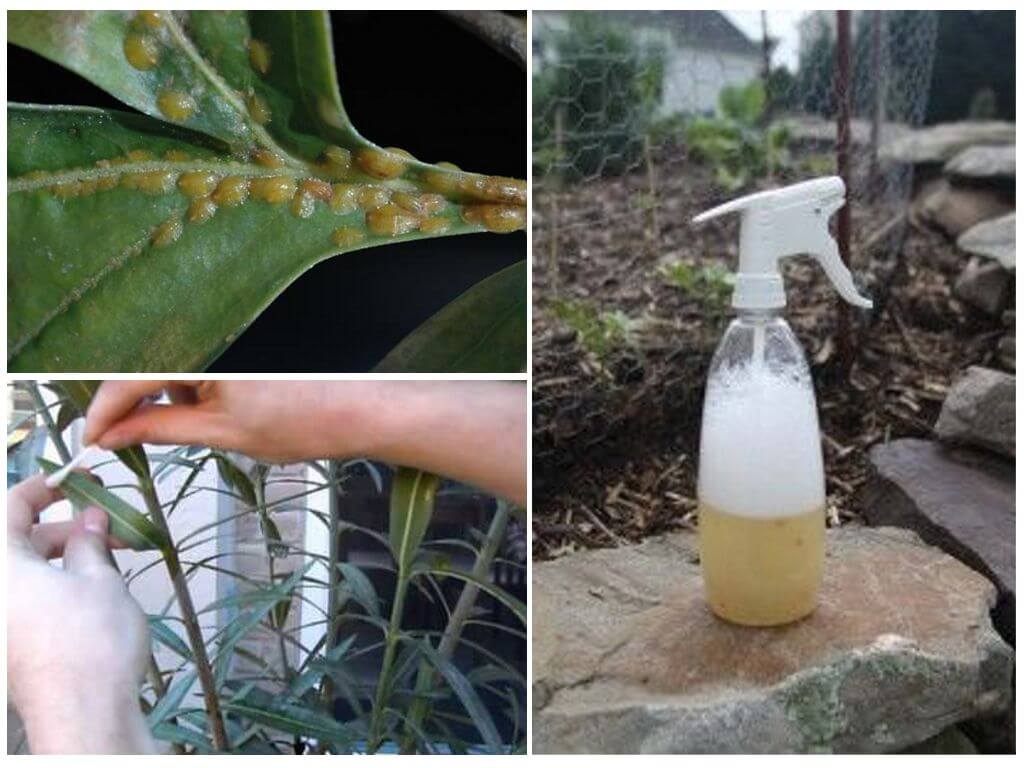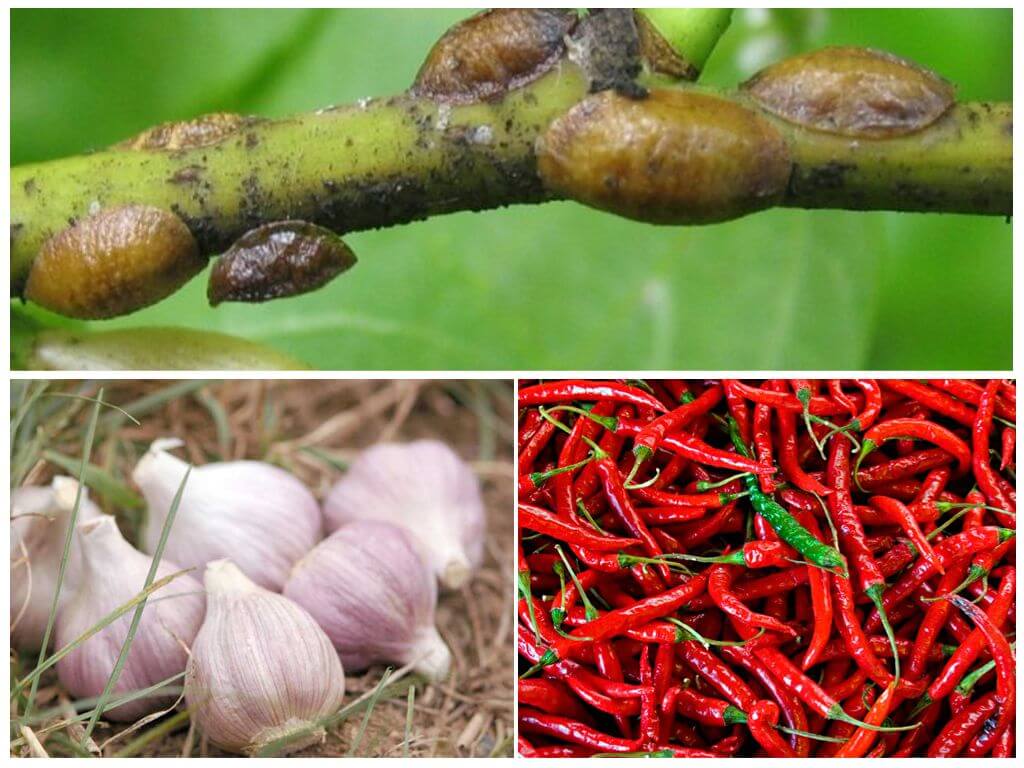How to get rid of shitovki on indoor flowers at home
Content
- Shchitovka
- Shchitka on indoor flowers
- Mechanical method of struggle
- Pest Control Chemicals
- Folk remedies for shield
Great harm to domestic plants cause scutes - insects pests. They are reliably protected by armor, able to quickly adapt to various types of poisons.As soon as they appear on the flowers, you should immediately destroy them. There are many types of this. pest indoor plants, insects differ in color and size. But everyone has a common feature - their body is covered with a wax shield. There is also a false shield, which also causes enormous harm to green plantings. For the destruction of parasites, there are different ways. How to deal with the shield on indoor plants - a question of interest to many gardeners and home plants.
What are the shitovki
Females of scarabs parasitizing on plants have external similarities:
- they have no antennae, eyes, wings, and legs;
- the sucking and pricking organs of the mouth are well developed;
- a young female has a soft shield that allows her to move;
- in an adult female, the shield hardens, and she is already in a stationary state;
- the shape of the guard is oval or round, the length of the calf varies from 1.5 to 2 mm, in some species it can reach 5 mm;
- under the shell the color of the female is light brown or white;
- in mature individuals, the body may be partially or fully covered with the shield;
- in the process of maturation of the larvae, the color of the female changes, it becomes non-uniformly colored - in the center there may be dark brown shades, and the outer ring is colored in golden brown tones.
The insect family of the coccid insect family is the only group that, in the process of evolution, is able to lead a fixed life and eat continuously.
Pest shchitovka - the male has the following signs:
- oral organs are absent;
- formed wings and legs are located at the location of the eyes;
- body broken into segments - clearly visible: the abdomen, chest and head.
- males are equipped with a large carapace;
- body color is red, light orange or reddish gray.
The very small eggs of the scythes (0.1–0.3 mm) are oval-shaped, their color is usually white or light gray. After a time, they get a brown tint. When viewed through a microscope, they resemble worms. A photo of a scout on the houseplants will help to examine the pest in detail.
Interesting!
If the larva is painted white - it will turn into a female. Red color says that later it will be a male.
What is dangerous for plants
If there is a scytology on plants, it can cause significant harm to representatives of the flora. It is not difficult to notice it. The leaf of the plant is covered with rounded brown or light scales. To tear them off is extremely difficult. False shields also appear on plants. Unlike a real scythe, they lack wax shell, the larvae and eggs are protected by dried skin, which disappears when the female dies.
Shchitovka and pseudo-guard are very harmful insects. They need 3-4 years to completely destroy fruit trees in the garden. Their danger is not exaggerated, as evidenced by the measures taken by the leaders of the agrarian regions. When they are detected on cultivated plants quarantine is declared.
Important!
The presence of shchitovok on a home plant leads to the appearance of a fungus, which rapidly affects the stems, leaves, root. Insects suck out sap from plants; as a result, leaves become covered with yellow spots, curl, dry and fall off. If you do not remove the insects in time, midges will eat juice until the plant dies. In addition to combating these pests on indoor plants, also with shields are fighting on garden trees, currant, grapes, coniferous plants.
How do insects appear in the house
Flags on indoor flowers may appear along with planting material that was already infected in the store. Insects enter the apartment or house with the help of the wind, which brought random "strollers". The causes of the appearance of scythes are also associated with improper care of domestic plants.
Important!
The pest does not settle on healthy plants. This is due to the fact that representatives of the flora produce protection that is able to scare off insects.
Parasites feed on plants that have metabolic disturbances due to oversaturation with nitrogen or weakening of the flower. The best time of year for this is winter. During this period, the plants receive an insufficient amount of light. Batteries also have a bad effect on them, as dry air is generated indoors. As a result, the structure of the juice is changing, excellent conditions are created for the appearance of flaps. Pests can be brought into the house with a new flower or cut plants. As soon as they are noticed,You should immediately get rid of shitovki on room flowers.
How to get rid of pests
There are different methods of dealing with the shield. Before taking advantage of any of them it is necessary to follow clear rules:
- First you should find on the plant the center of pest spread. Usually it is a flower with a large cluster of scarab.
- Found the source of distribution must be attributed to the room without plants.
- Thoroughly treat the place where the infected flower was located using soap solution and insecticides.
- From the diseased plant, the scythes are harvested by hand, using a cotton swab previously soaked in a chemical substance intended for the destruction of harmful insects (insecticide). It is not recommended to use alcohol or kerosene for these purposes, as they can leave burns on the leaves.
- Flags that can move, can hide, so the leaves of the plant should be washed using a soap solution or tobacco infusion. The treatment is carried out carefully, this will help the toothbrush, which is dipped in the prepared funds from shchitovki.The plant is left for a day, after which the solution is washed off.
- To get rid of black flies in room flowers, the procedure must be repeated. For this, leaves, flower stalks and soil are treated with chemicals. After two days the insects must die. If this does not happen, it is necessary to repeat the procedure until they disappear completely, then wash off the insecticides.
To remove flaps, you can use a knife and spray with soapy water and an insecticide.
Feedback
Since I am very sensitive to my green friends, I check them very carefully during watering. Once on its new orchids discovered strange insects. I found out that this is a scale, took advantage of the advice how to deal with the shield on orchids, which is found on the Internet. Processed leaves and stalks with soapy water. Did the procedure for a week. The pests died.
Elena, Saratov
Pest Control Chemicals
If domestic plants are severely affected, it is not so easy to remove the shield. In this case, it is recommended to use chemicals.According to consumers, the following are considered the most popular. means of midges:
- Aktara. Powerful effective drug that can destroy the shield in the home. To do this, use a solution means (1.25 l of water is diluted with 1 g of the substance) and carry out spraying of plants, as well as pour it into the soil. Conduct the procedure at least two times with an interval of 10-12 days. Flush Aktar after the procedure is not necessary.
- Phyto farm The fight against the shield with this tool is also effective. Experts recommend using this drug in the first place. For use, dilute 2 ml of the product in two liters of water and spray infected plants with the resulting solution. It is necessary to carry out processing several times in 5-8 days. Mostly 3-4 procedures are enough, after which the shield dies. Since the insecticide has a biological origin, treatment with it is practically not dangerous for humans and pets living in the house. To support the plant after the last procedure, it is recommended to treat it with Appin, a biological growth stimulator that boosts the immune system of the plants.
- Confidor.To obtain a solution in 0.5 l of water you need to dissolve 1 gram of the substance, then spray the soil and the plant. Insects die in 3-4 hours. It is also recommended to water the soil with a solution diluted in half with water.
- Mospilan This poison from the shield can penetrate deep into the plant tissue, causing paralysis of not only adult insects, but also the death of eggs and larvae. For humans, it is slightly toxic.
Insecticides are toxic substances, so safety precautions should be followed. Using chemicals from shitovki, it is recommended to wear rubber gloves, a respirator, glasses. If a person lives in the house, it is better to take out the plants on the street, and those who live in apartments - on the balcony.
Feedback
I, on the recommendation of my friend, purchased the drug Fitofarm. Processed with his help indoor plants. The decorative lemon was the most infected. The effect is really good. Get rid of shitovki on lemon and other plants succeeded.
Galina, Krasnoyarsk
Folk remedies
You can fight at home with the help of folk remedies. To do this, use a variety of infusions:
- Garlic.Pour chopped garlic cloves (5 pcs.) With one liter of warm water, infuse the solution for a day. Spray the plant and soil.
- Hot peppers. Finely chop 50 grams of chilli pepper, pour it with 0.5 liter of boiling water and boil for 5 minutes. After the solution has cooled, they sprayed the affected plants.
- Bow. Finely chopped onion is poured with warm water and infused for several hours. The resulting solution must wipe the leaves.
Folk remedies well help, if the plants are not strongly affected by the shield. Otherwise, resort to other methods with the use of chemicals.
Feedback
Since I live in a private house, I chose this method to destroy the scythes. I grow hot pepper every year. Prepared the solution and carried out the procedure. I repeated it in 3 days. My flowers are healthy again.
Maria, Lipetsk
Prevention
In order for home plants to be always healthy, it is necessary to take preventive measures. It is recommended to wash the leaves with soap solutions once a month. Newly purchased flowers should be placed in a separate room "in quarantine."If in a week nothing will show up on them, you can put them in any place, in company with other house plants. If you add garlic to the soap solution, you will get a very effective means by which the top layer of the soil and the plant itself are sprayed. Using such simple methods, the treatment of indoor plants is never needed.

